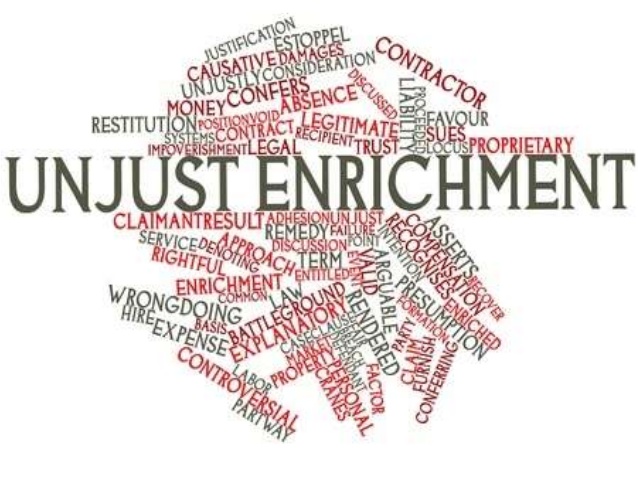
by Michael Reilly | Oct 6, 2017 | Civil Litigation
 For many people, when they think of civil litigation and going to court, they think of suing for damages or monetary compensation. However, damages are just one of several forms of relief that a court can order.
For many people, when they think of civil litigation and going to court, they think of suing for damages or monetary compensation. However, damages are just one of several forms of relief that a court can order.
Injunctions are another form of relief that can be sought in a civil litigation case. Simply put, an injunction is a type of court order that requires the subject of the court order to either do or refrain from doing something specific. For instance, an employer can seek an injunction requiring a former employee to comply with a non-solicitation agreement and refrain from contacting the employer’s customers.
In order to succeed on an application for an injunction, there are 3 criteria that must be met:
- There must be a serious issue to be tried;
- The party seeking the injunction would incur irreparable harm if the injunction is not granted; and
- The balance of convenience, taking into account the public interest, favours granting the injunction.
Recently, the Toronto Transit Commission was in the news over an injunction sought by the Amalgamated Transit Union to prevent the TTC from implementing its random drug and alcohol testing policy called the Fitness for Duty Policy. A link to the court’s decision can be found here.
On the first part of the test, the court was satisfied that there was a serious issue to be determined at an arbitration hearing between the TTC and the union – specifically, whether or not there was a demonstrated problem with alcohol and drugs in the workplace such that the policy should remain in place.
On the second part of the test, the court had to consider whether or not the Fitness for Duty Policy violated an employee’s reasonable expectation of privacy as protected by the guarantee of security from unreasonable search and seizure under the Canadian Charter of Rights and Freedoms. The court was not persuaded that TTC employees would suffer irreparable harm if the injunction was not granted. Part of the court’s reasoning, found at paragraph 68 of the decision, was that, if the injunction was not granted and the Duty for Fitness Policy was not upheld at arbitration, an employee could sue for damages for invasion of privacy. My article on the tort of invasion of privacy or intrusion upon seclusion can be found here.
At paragraph 153 of the decision, the court concluded that random testing would “increase the likelihood that an employee in a safety critical position, who is prone to using drugs or alcohol too close in time to coming to work, will either be ultimately detected when the test result is known or deterred by the prospect of being randomly tested.” The desirable outcome would be an increase in public safety.
As a result, the court denied the union’s application for the injunction. As you may have heard or read, several TTC employees have since been caught by the Duty for Fitness Policy.
An injunction, sought at an early stage of a lawsuit, can provide a strategic advantage in civil litigation. It is important to seek legal advice from a knowledgeable and experienced litigator when dealing with these kinds of matters.
This article is intended only to provide general information and does not constitute legal advice. Should you require advice specific to your situation, please feel free to contact me to discuss the matter further.
Written by Jeffrey Robles and originally published on the blog at http://jeffreyrobles.com. Jeffrey represents clients in the areas of employment law and personal injury in the Ontario Superior Court of Justice.

by kathyras@rogers.com | Dec 19, 2016 | Civil Litigation
As a father myself, the idea of children being held liable hits home for me. We generally consider children to be innocent and incapable of the kinds of wrongdoing that we generally associate with adults. The law, however, does not have the luxury of turning a blind eye to this. Last month, the Court of Appeal dealt with the issue of the possible contributory negligence of a child who was injured while crossing the road. A link to this decision can be found here.
Just like adults, children can be found negligent in law. All people, adults and children alike, are held to a certain standard of care. In the case of children, the test is whether or not a child has exercised the care expected from children of similar age, intelligence and experience. If you take a moment to consider this, you can see how difficult an analysis this can be.
In the case before the Court of Appeal, the litigants agreed that the injured boy was old enough to be found contributorily negligent. However, they disagreed as to whether or not he was in fact contributorily negligent.
The Court of Appeal deferred to the trial judge’s findings that the boy was of average intelligence, had been taught to look both ways before crossing, did not remember to look before crossing, and knew better. At the same time, the trial judge concluded that the boy did not have experience crossing a busy four-lane highway unsupervised. The appellate court also deferred to this finding.
As parents, we sometimes get frustrated with our children for doing things that we feel “they should know better” than to do. I will readily admit that I am guilty of this with my own children from time to time.
Yet, the Court of Appeal reminds us that “children lack the judgment of adults and that they are notoriously forgetful when they are distracted or confused, and therefore do not follow instructions on the basis of which “they should know better”, are concepts that are generally accepted and that have been recognized by the courts as factors distinguishing the conduct of children from that of adults in the negligence liability context”.
It is important to keep in mind that the thought processes of children are and should be treated differently – not only in fact, but also in law. This is underscored by the fact that children are afforded special legal representation not available to adults, by way of the Office of the Children’s Lawyer. Bearing in mind their vulnerability, children should be treated with utmost care and concern by the law, and not just their parents.
This article is intended only to provide general information and does not constitute legal advice. Should you require advice specific to your situation, please feel free to contact me to discuss the matter further.
Written by Jeffrey Robles and originally published on the blog at http://jeffreyrobles.com. Jeffrey represents clients in the areas of employment law and personal injury in the Ontario Superior Court of Justice.

by kathyras@rogers.com | Apr 28, 2017 | Civil Litigation
When people think of property rights between individuals, often matrimonial disputes come to mind. In Ontario, only married couples have a right to what is called “equalization of net family properties” as provided for under the Family Law Act. For unmarried couples, any right to the property of the other spouse after a breakdown of the relationship is most often obtained by way of a claim for unjust enrichment.
However, a claim for unjust enrichment is not limited to matrimonial disputes. This kind of claim can just as easily be advanced in a civil litigation context. In the past, I have used unjust enrichment where disputes arose between business partners after a deal involving property fell apart.
Claims of this nature can also arise between siblings involved in a family business. Often, before the dispute arose, the familial bonds of love, trust and understanding outweighed the need for documentation concerning ownership and governance of the business. Sadly, property, or its value, can cause those bonds to break apart.
What is unjust enrichment? It is a claim that seeks to address situations where one party has taken advantage of the resources of another party to the detriment of that other party. The courts have outlined the following elements of unjust enrichment, all of which must be established in order to succeed in such a claim:
There must be a benefit conferred from one party to another party. For example, this can be in the form of money, the acquisition or improvement of property, or valuable services rendered.
There must be a corresponding deprivation of that benefit experienced by the party conferring the benefit. For instance, if a party renders a service to another, that party has been deprived of the opportunity cost of their own time and effort.
Lastly, there must be no legal basis (referred to in the case law as a juristic reason) for the enrichment. The party receiving the benefit should be be able to show why they should be allowed to retain the benefit. Such reasons can include a contract for services rendered, or the intention of a gift.
If these elements are established, then a claim for unjust enrichment is proven. A court can then consider the appropriate remedy, whether it be monetary compensation based on the value of the benefit or enrichment conferred or a constructive trust (which is essentially a declaration of an interest in property despite the absence of legal title).
In a perfect world, all property disputes would be avoided, or at least determined, with appropriate documentation clearly setting out ownership and any obligations or entitlements. Nevertheless, in this imperfect world we live in, an unjust enrichment claim can be an effective way to address unfair or inequitable situations involving property.
This article is intended only to provide general information and does not constitute legal advice. Should you require advice specific to your situation, please feel free to contact me to discuss the matter further.
Written by Jeffrey Robles and originally published on the blog at http://jeffreyrobles.com. Jeffrey represents clients in the areas of employment law and personal injury in the Ontario Superior Court of Justice.

 For many people, when they think of civil litigation and going to court, they think of suing for damages or monetary compensation. However, damages are just one of several forms of relief that a court can order.
For many people, when they think of civil litigation and going to court, they think of suing for damages or monetary compensation. However, damages are just one of several forms of relief that a court can order.



